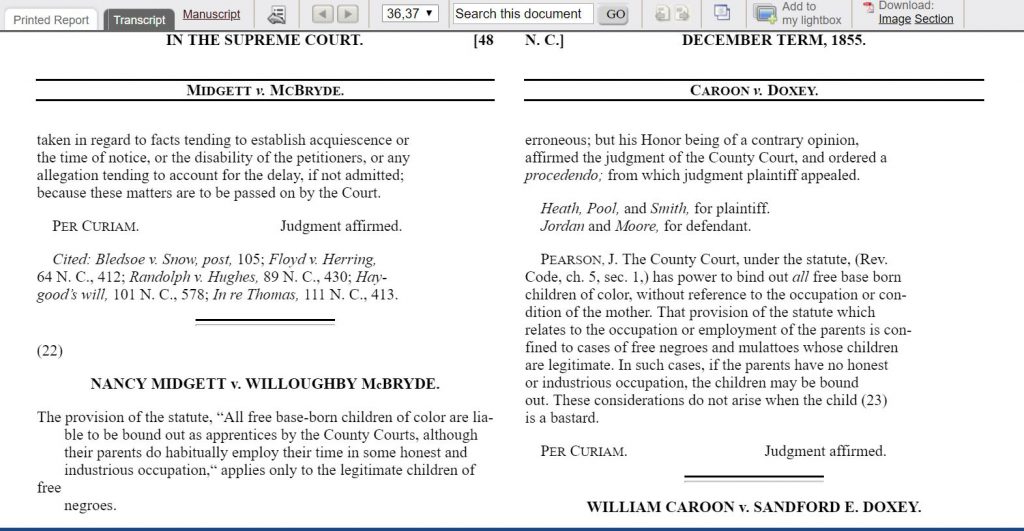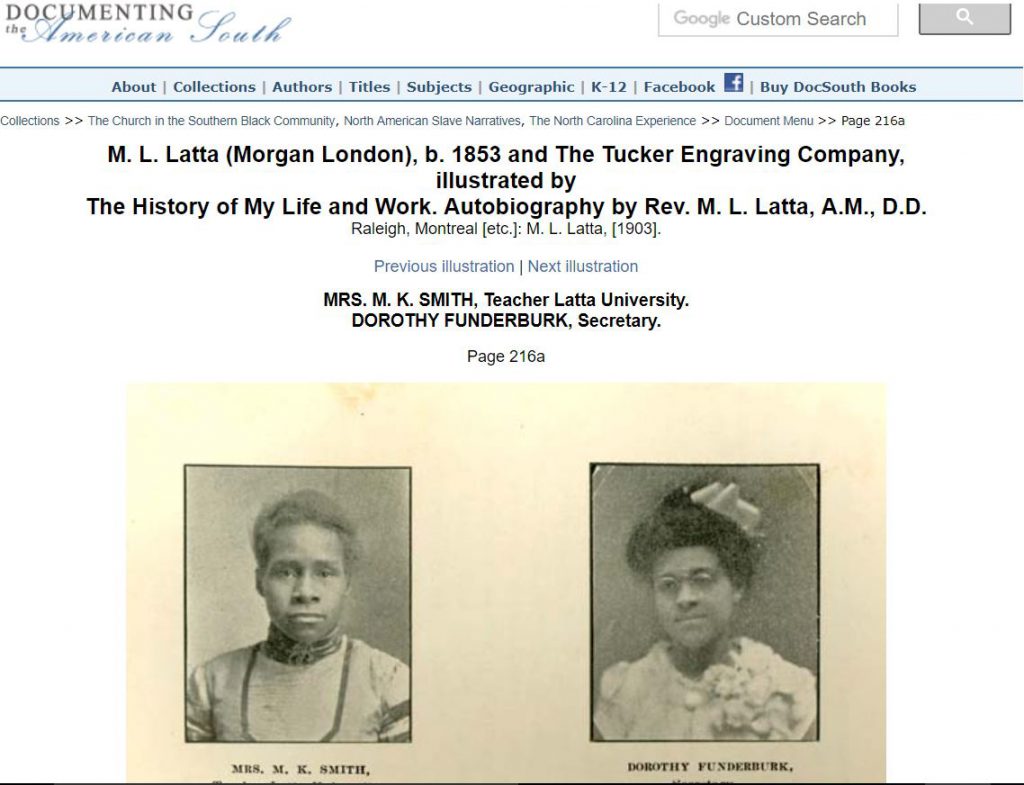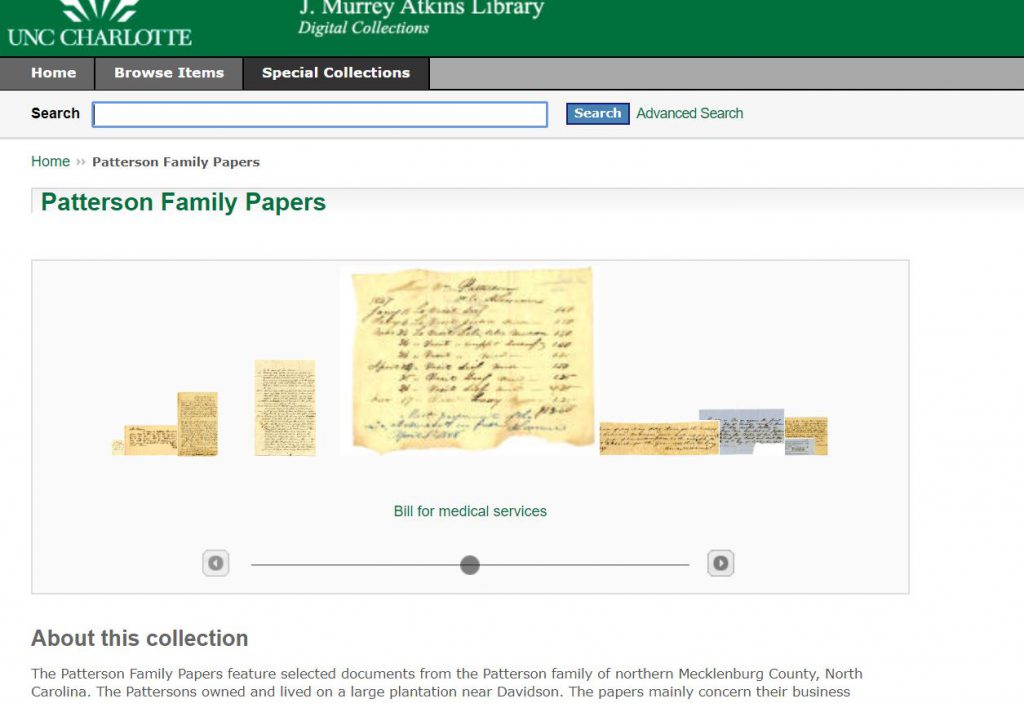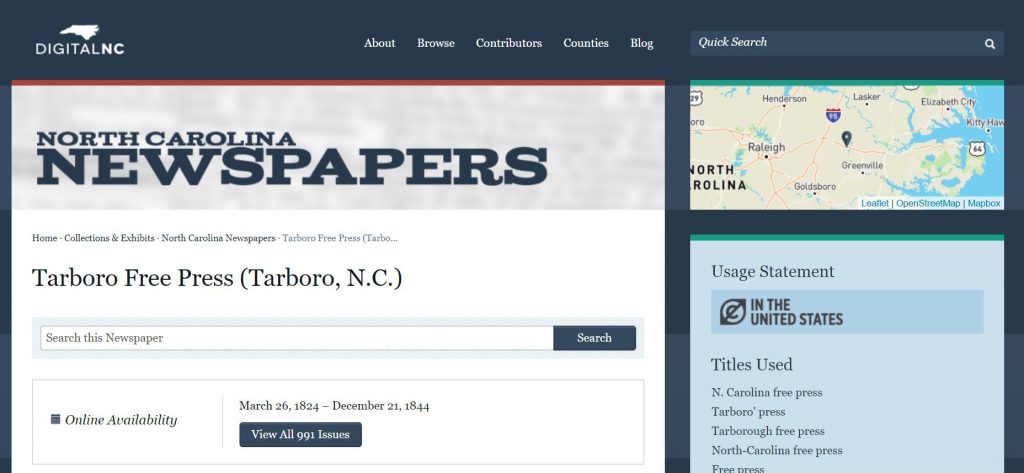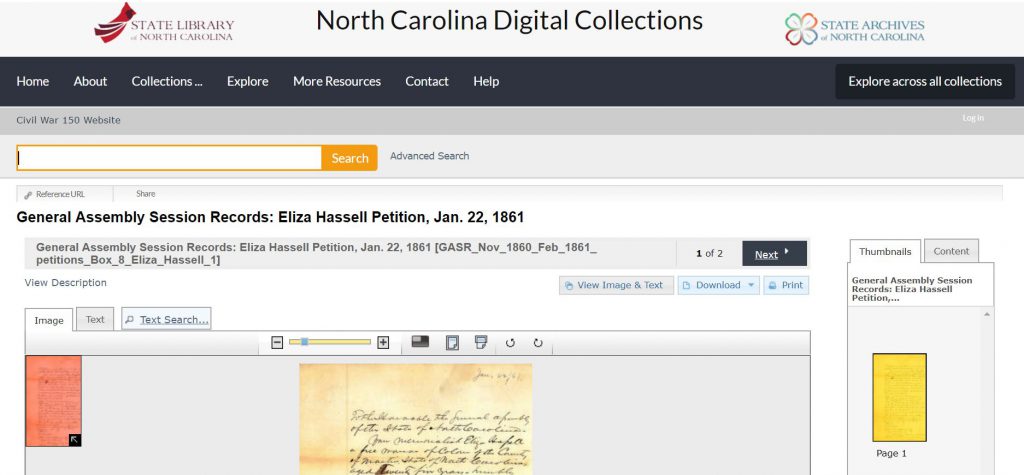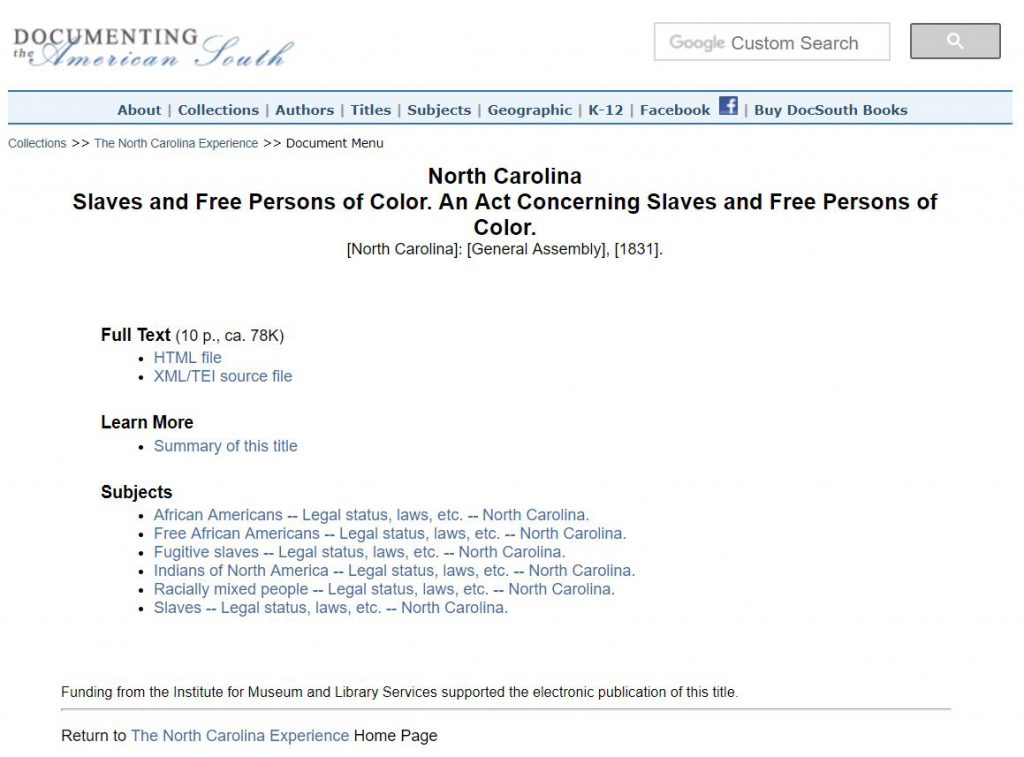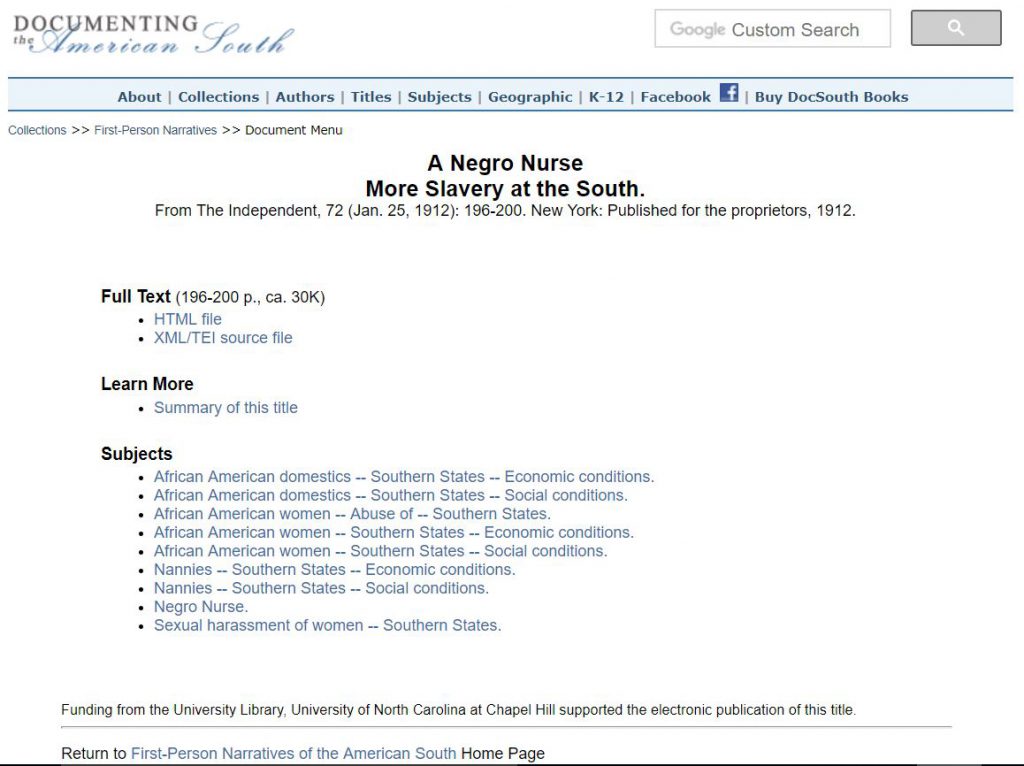After multiple class sessions introducing our archival and manuscript collections and oral history best practices, students in Dr. Nneka Dennie’s Spring 2019 AFR 329: Women & Slavery in the Black Atlantic course produced a documentary using oral histories created throughout the semester. These materials will be donated to the Archives.
In addition to this main project, students were tasked with identifying primary sources from local archives, historic sites, and/or repositories that shed light on the lived experiences of enslaved women or women enslavers. The following series of blog posts are authored by these students upon the completion of this archival research process and serve as reflective pieces.
Thank you for your submissions-and a wonderful semester of fruitful collaborations!
“Enslaved Female Representation in Slave Advertisement During the Antebellum period (1784-1860)”
written by Uyen Nguyen
Slavery was the main economic and political force that shaped the culture and social life of North Carolina. The treatment of enslaved 1 people worsened due to the whites’ fear of abolition. Under increasing brutality and violence of Black Codes, many enslaved individuals in the South attempted to run away to the North with the hope to gain manumission. Enslavers suffered a massive economic loss when their slaves 2 ran away. In order to have their “property” returned, they hired slave catchers and disseminated advertisements rewarding individuals who could find their runaway slaves.
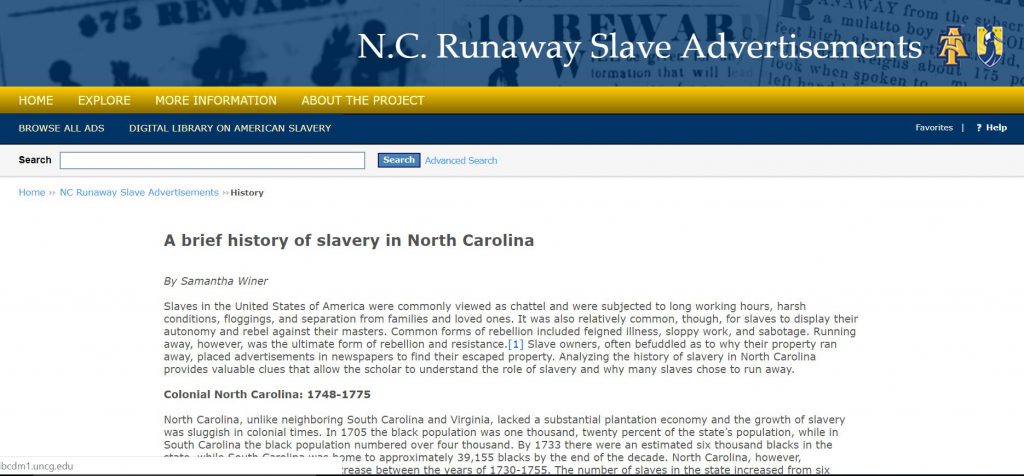
While enslaved women were less likely to run away than men due to familial commitments and geographic limitations, they were more likely to get caught because there were more advertisements reporting them as running away. Besides serving as a common tool to find their runaway slaves, 3 slave runaway advertisements were disseminated by white people as propaganda to further criminalize the resistance of enslaved people in means of legal and moral justifications. Furthermore, the representation of women in these ads perpetuated the inferiorization of enslaved women and their bodies.
In a runaway slave advertisement created by John McCord on the 23rd of August, 1838, an enslaved women named Lucy disappeared during her shift at another plantation. The ad 4 describes Lucy as “about 25 years of age, very black, and about five feet high and slender.” Like 5 features of other runaway slave advertisements, the color of this enslaved women, as well as her “immoral act,” were mentioned.
In the ad, her owner accuses her of stealing a cotton frock and taking the clothes with her during the escape. With the use of language such as “very black” and the inclusion of the enslaved women’s stealing, this ad further perpetuates the inferiority of enslaved women based on their skin color and how their enslavers have the legal and moral rights to have her returned. In another runaway ad, enslaver Samuel Sugg reported an enslaved woman named Sylvia on December 10, 1824, who escaped his plantation in Wake Forest, North Carolina.
She was 35 years old, and the ad describes her as “very black, low set and chunkey 6 made.” Sugg suspected that she was passing as a free woman and would reward any person that “will take her up and lodge her in jail.” Indeed, by giving any person a right to confine Sylvia, 7 her owner conveys that her runway act and passing as a free woman are against the law and should be punished with imprisonment. In addition, she was described as sneaky and “rather a 8 down look when spoken to, and a very palavering tongue.” In this ad, we can see Sylvia’s whole existence is constructed through her owner’s description, and her character and moral compass were assassinated with dehumanizing languages. Her skin color and attributes were the only things that seemed significant about her, as they conveyed her criminality and mischievous behaviors. In the big picture, this type of representation reinforces the inferiorization of Black women’s bodies and how their body “was regarded by much of American society as no more than biddable property.” 9
In these ads, white owners give the rights to anyone to use violence against their slaves because of their immoral act of running away. It was no longer an individual effort to find the enslaved, but it became a societal effort to reclaim the runway enslaved who were the “property” that belonged to white people. Through the language used to describe runaway slaves, we can see the hyper-criminalization in which enslaved resistance was propagandized as immoral and illegal. The enslaved female representation in these ads was racist and dehumanizing and reinforced the notion that enslaved women’s worth is solely based on their body. By describing runaway enslaved as inferiors and criminals, white owners concealed their violence and brutal acts, which were the reasons for the enslaved to run away, and framed themselves as the losing parties.
Bibliography
Boyd, B. P. “$20 Reward.” Charlotte Journal. March 5, 1840.
Camp, Stephanie M. H. Closer to Freedom : Enslaved Women and Everyday Resistance in the Plantation South. Gender and American Culture. Chapel Hill: University of North Carolina Press, 2004. 2004. Accessed April 19, 2019.
Sugg, Samuel. “Ran Away.” Raleigh Register and North Carolina Weekly Advertiser. May 27, 1825
Winer, Samantha. “A brief history of slave in North Carolina.” N.C. Runaway Slave Advertisement. Accessed April 19, 2019. http://libcdm1.uncg.edu/cdm/history/collection/RAS.
Footnotes
1 Samantha Winer, “A brief history of slave in North Carolina,” N.C. Runaway Slave Advertisement, accessed April 19,2019. http://libcdm1.uncg.edu/cdm/history/collection/RAS 2 Ibid. 3 Stephanie M. H. Camp, Closer to Freedom : Enslaved Women and Everyday Resistance in the Plantation South, Gender and American Culture, Chapel Hill: University of North Carolina Press, 2004. 2004, Accessed April 19, 2019. 4 B. P. Boyd, “$20 Reward,” Charlotte Journal, March 5, 1840. 5 Ibid. 6 Samuel Sugg, “Ran Away,” Raleigh Register and North Carolina Weekly Advertiser, May 27, 1825 7 Ibid. 8 Ibid.
9 Stephanie M. H. Camp, Closer to Freedom : Enslaved Women and Everyday Resistance in the Plantation South, Gender and American Culture, Chapel Hill: University of North Carolina Press, 2004. 2004, Accessed April 19, 2019.
